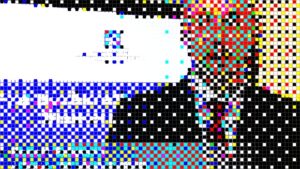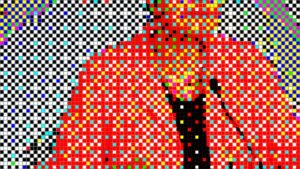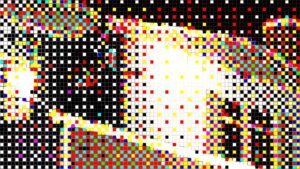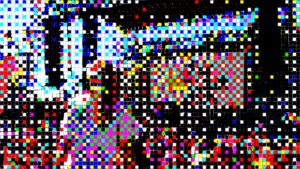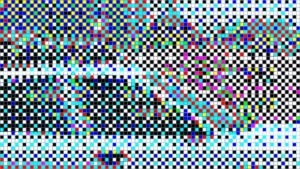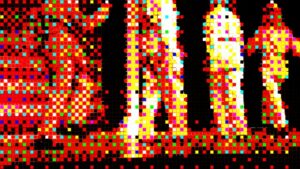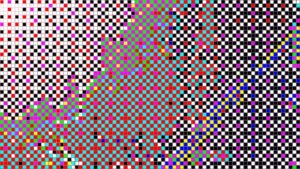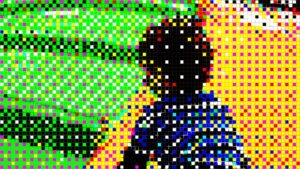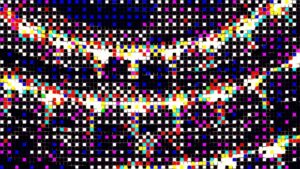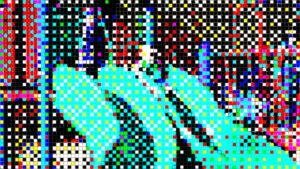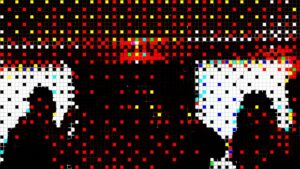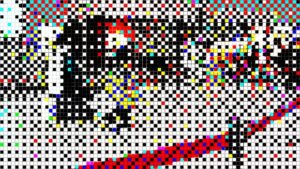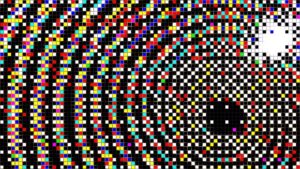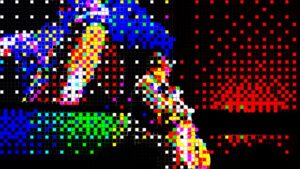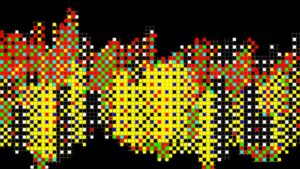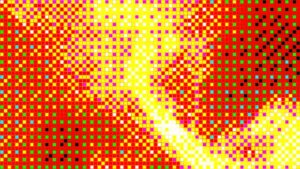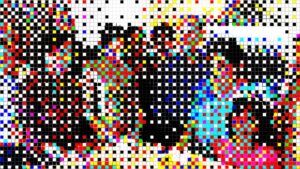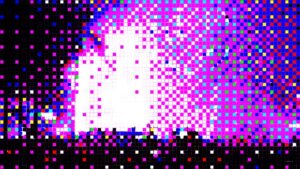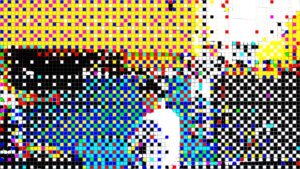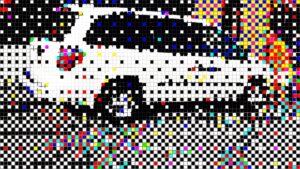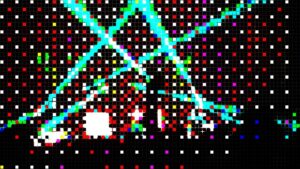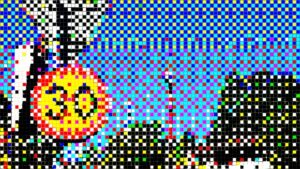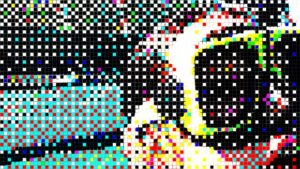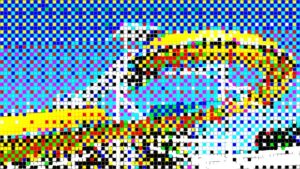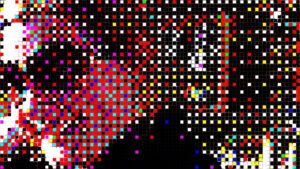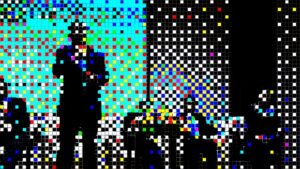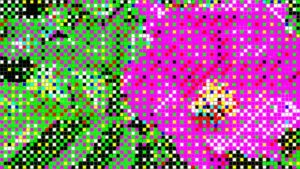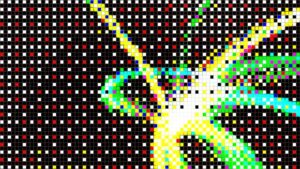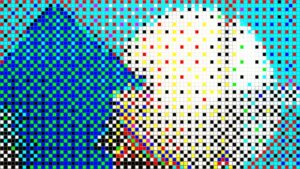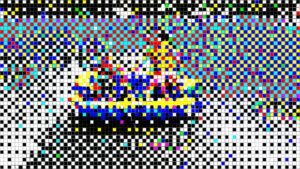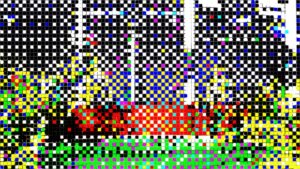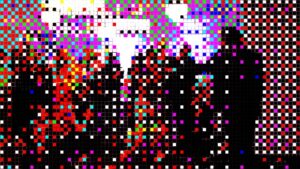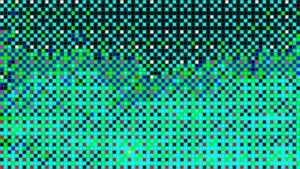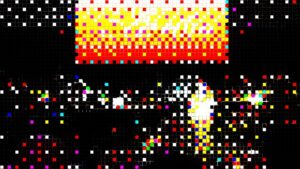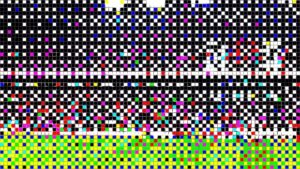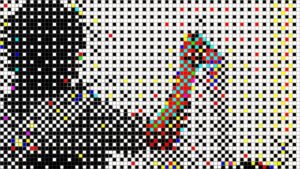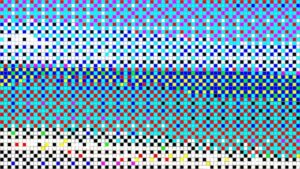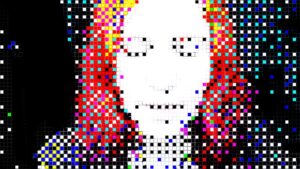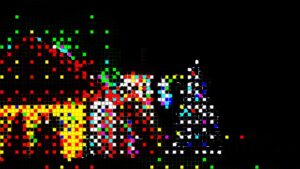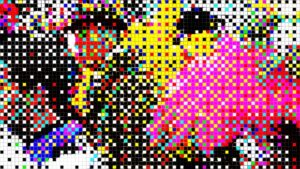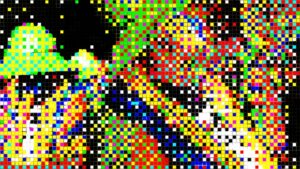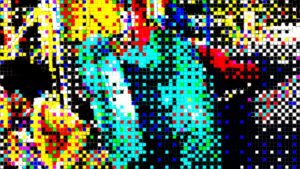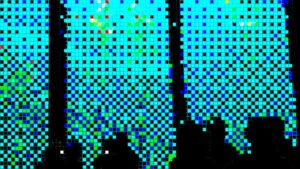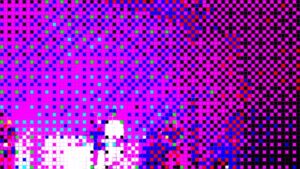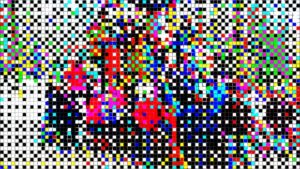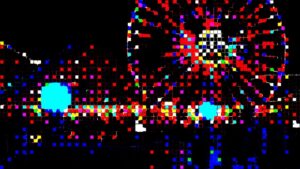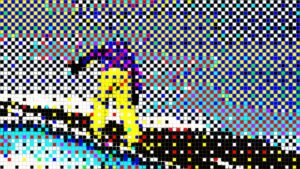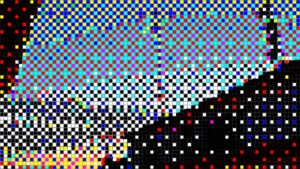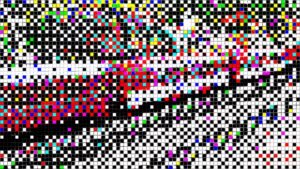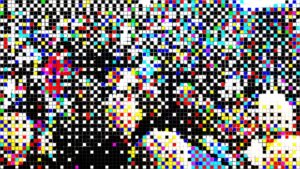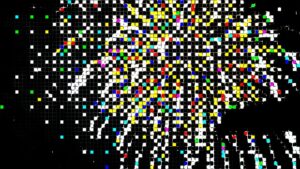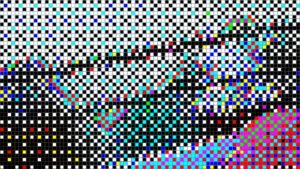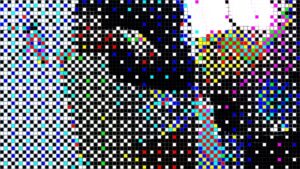Spectacle presents the entire KoNVid-1k dataset, a set of 1200 8-second video clips. Each frame of every clip has been subjected to an ordered-dithering compression algorithm that severely reduces both resolution and color. The colored squares produced by this dithering process are superimposed on the original frame image such that the barest glimpse of the original video is visible around their edges. To me, this glimpse is a kind of metaphor for the extent to which, despite the change of use and context, and the layers of digital manipulation to which these video clips have been subjected, the humanity of the filmmakers and their subjects – and the underlying motivation to share human experiences with one another — still shows through.
In April 2024, the New York Times reported that OpenAI had transcribed, without permission, over 1 million hours of YouTube videos to feed into the training of its AI system, GPT-4. An earlier precedent was set by Yahoo when, after acquiring the photo-sharing site Flickr, it assembled nearly 100 million photos that had been shared on the site into the YFCC100M research dataset. IBM later used a part of this dataset to train facial recognition programs.
Although the YFCC100M dataset is largely comprised of photos, it also includes about 800,000 videos that were shared on Flickr. This work focuses on a selected subset of these videos that were trimmed to 8-second clips and compiled in the KoNVid-1k dataset, which is used to train algorithms for video quality assessment.
The degradation of the source video produced by algorithmic dithering is a reminder of the distillation process by which personal videos recorded to share meaningful events have been reduced to spectacle, or content, for which the previously incidental characteristics of the video (its playback quality) have become central to its value, while the events they recorded have become incidental.
The title of the work references Guy Debord’s 1967 book The Society of the Spectacle: “In societies where modern conditions of production prevail, life is presented as an immense accumulation of spectacles. Everything that was directly lived has receded into a representation. The images detached from every aspect of life merge into a common stream in which the unity of that life can no longer be recovered.”
